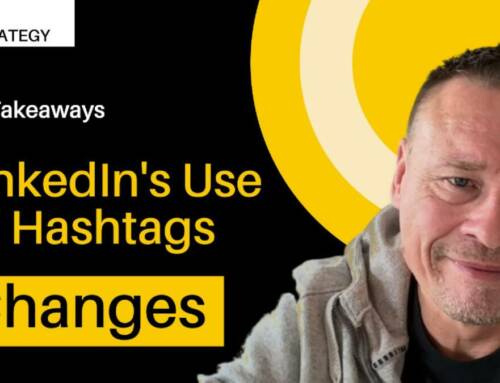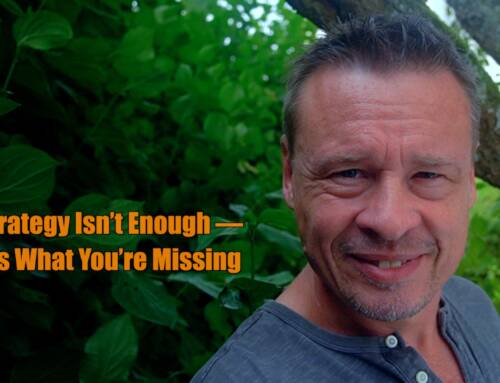First a point of clarification on two very important concepts or notions. There is a notable difference between the related but distinct concepts in the field of international development: “communications in development cooperation” and “communication for development” (C4D).
“Communications in development cooperation” refers to the use of communication strategies and tools within the context of specific development projects and programs, with the goal of achieving specific development objectives. This can include activities such as advocacy, community engagement, behavior change communication, and media relations. The advocacy efforts frequently also aim to inform taxpayers in donor countries about the positive impact their funding is having in developing nations.
“Communication for development” is a broader field that utilizes communication as a tool for promoting development and social change. Its approaches are multidisciplinary and often involve interactive, participatory, and empowerment-based communication methods. The goal of C4D is to build the capacity of individuals, communities, and institutions to communicate effectively and advocate for their own development.
Advocacy
The act of pleading or arguing in favor of a cause or policy, which can be an important way to raise awareness and influence decision-making in the development sector.
Behavior change communication
The use of communication strategies to influence attitudes and behaviors in order to promote positive social and development outcomes.
Community engagement
The process of involving members of a community in the planning, implementation, and evaluation of development projects and programs, which can help to ensure that they are relevant and sustainable.
Communication for development (C4D)
A multidisciplinary field that uses communication to promote development and social change, by increasing understanding, participation, and dialogue among stakeholders.
Communication strategy
A plan that outlines the goals, target audience, messages, channels, and resources for a communication campaign or program. That’s the reality. Ideally the heart of a strategy is an intelligent and conducive idea but in development cooperation it is usually more of a roll-out plan, which you stick to no matter what.
Communications planning
The process of identifying the communication needs and goals of a development project or program, and developing a plan to achieve them.
Dialogue
A process of open and honest communication that allows stakeholders to exchange views, listen to each other, and seek common ground.
Evaluating communication
The process of measuring the effectiveness of communication interventions in order to assess their impact and inform future practice.
Gender-sensitive communication
Communication that takes into account the different needs, perspectives, and experiences of men and women, and promotes gender equality.
Information dissemination
The process of distributing information to a target audience, in order to raise awareness, inform decision-making, or promote behavior change.
Interactive communication
Communication that involves a two-way exchange of information and ideas, and encourages participation and dialogue among stakeholders. (see also two-way communication)
Knowledge management
The process of capturing, organizing, and sharing knowledge and information in a way that promotes learning and innovation.
Media development
The support and strengthening of media systems and capacities in developing countries, in order to promote freedom of expression and the flow of information.
Media relations
The process of building and maintaining relationships with the media in order to communicate effectively with the public.
Message development
The process of crafting clear and compelling messages that are tailored to the needs and interests of a target audience.
Mobilization
The process of activating and engaging people around a common cause or issue, in order to achieve a specific goal or outcome.
Networking
The process of building and maintaining relationships with other organizations or individuals in order to share knowledge, resources, and support.
Participatory communication
Communication that involves the active participation of all stakeholders in the process of planning, implementing, and evaluating communication interventions.
Public awareness
The level of knowledge and understanding that the general public has about a particular issue or topic.
Public relations
The practice of building and maintaining relationships with the public and stakeholders, in order to enhance the reputation and credibility of an organization.
Social marketing
The use of marketing principles and techniques to promote social and development goals, such as improving health or protecting the environment.
Social media
Online platforms that enable users to create and share content, and facilitate communication and collaboration among communities of interest.
Strategic communication
The planned and coordinated use of communication to achieve specific goals or objectives, often in the context of complex or sensitive issues.
Stakeholder engagement
The process of involving relevant parties in the planning, implementation, and evaluation of development projects and programs, in order to ensure their relevance, sustainability, and accountability. Who the stakeholders are is often determined by a stakeholder mapping exercise.
Storytelling
Storytelling is a powerful tool for communication in international development cooperation because it can help to engage and inspire audiences, convey complex ideas in a simple and compelling way, and promote understanding and empathy. By using stories to illustrate the challenges and opportunities faced by communities and individuals in developing countries, development organizations can help to bring human faces and voices to their work, and make it more relatable and meaningful to their audiences. Storytelling can be a valuable way to document and share lessons learned, and to showcase the impact and value of development programs.
Visual storytelling is the use of visual media, such as images, video, and graphics, to tell stories and communicate information. It engages and informs audiences often involving the use of creative and engaging techniques, such as storytelling structures, visual metaphors, and compelling imagery, to convey complex ideas and emotions in a clear and impactful way. It can be particularly effective in reaching and resonating with audiences who may not be literate or familiar with traditional forms of communication.
Target audience
A communications target group is the specific group of people that a communication campaign or program is intended to reach and influence. It is usually defined based on factors such as demographics, interests, behaviors, and needs, and is targeted with specific messages and channels that are designed to be relevant and appealing to them.
Then there are beneficiaries of an intervention who are directly impacted by or intended to benefit from a development program or project. They may or may not be the same as the communications target group, depending on the goals and focus of the intervention and the communication strategy. For example, the beneficiaries of a health intervention may be the patients and their families, while the communications target group may be the health care providers and policymakers who need to be informed and influenced in order to support the implementation of the intervention.
It is important not to confuse the communications target group with the beneficiaries of an intervention, because they may have different needs, perspectives, and priorities, and may require different communication approaches in order to be effectively reached and engaged.
Two-way communication
Communication that involves a mutual exchange of information and ideas, and allows for feedback and dialogue. Some folks use this term interchangeably with interactive communication, which actually is a more complex field.
Interactive tools in communications refer to technologies or platforms that allow for two-way communication and engagement between a sender and a receiver. They can facilitate dialogue, feedback, and participation, and allow for the exchange of information and ideas in real-time. Interactive tools can include a wide range of technologies and platforms, such as social media, mobile apps, websites, text messaging, and forums, among others.
In the context of international development cooperation, interactive tools can be used to engage and involve stakeholders in the planning, implementation, and evaluation of development programs, and to facilitate knowledge sharing and collaboration. They can also be used to gather feedback and insights from communities and beneficiaries, and to track and measure the impact of development interventions.
Verification
The process of checking and confirming the accuracy and credibility of information, in order to ensure that it is reliable and trustworthy.
Video production
The process of creating visual (and audio) content using video cameras and other production equipment such as the smartphones of project staff.
Visual communication
The use of images, graphics, and other visual elements to communicate information and ideas.
Web content management
The process of creating, organizing, and publishing content on the web, in order to make it accessible and user-friendly. Usually websites use a standard content management system (CMS). Basic knowledge of working with a CMS is recommendable for communications pros in development cooperation.
Writing for the web
The process of creating content for the web that is clear, concise, and easily readable, and follows best practices for online writing. Basic knowledge of how to work with search engine optimisation (SEO) and its tools is recommendable for communications pros in development cooperation.
Advocacy journalism
Journalism that seeks to bring attention to social and development issues, and advocate for change.
Citizen journalism
Journalism produced by non-professional journalists, often using social media and other online platforms.
Data journalism
The use of data and data visualization to tell stories and inform the public about issues and trends.
Development journalism
Journalism that focuses on development issues and seeks to inform and engage the public about them.
Fact-checking
The process of verifying the accuracy and reliability of information, in order to ensure that it is based on facts and not misinformation.
Investigative journalism
Journalism that seeks to uncover and expose wrongdoing or corruption, and hold those in power accountable. Unfortunately rather rare in the context of government organised development cooperation.
Multimedia journalism
Journalism that uses a variety of media, such as text, audio, video, and images, to tell stories and inform the public.
Public interest journalism
Journalism that serves the public good, and seeks to inform and engage the public on issues of public concern.
Visual storytelling
The use of visual media, such as images, video, and graphics, to tell stories and communicate information. See also storytelling.






Leave A Comment